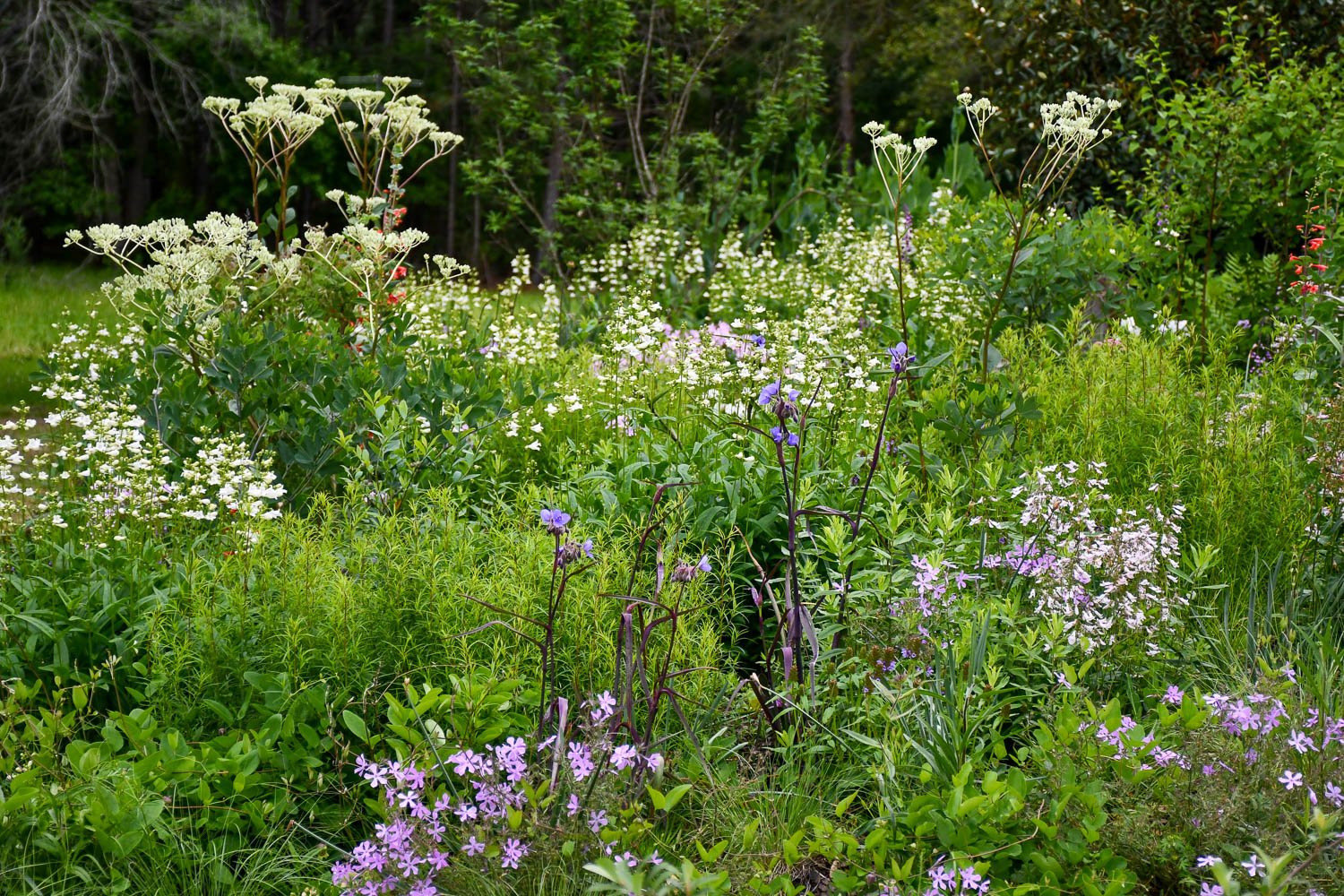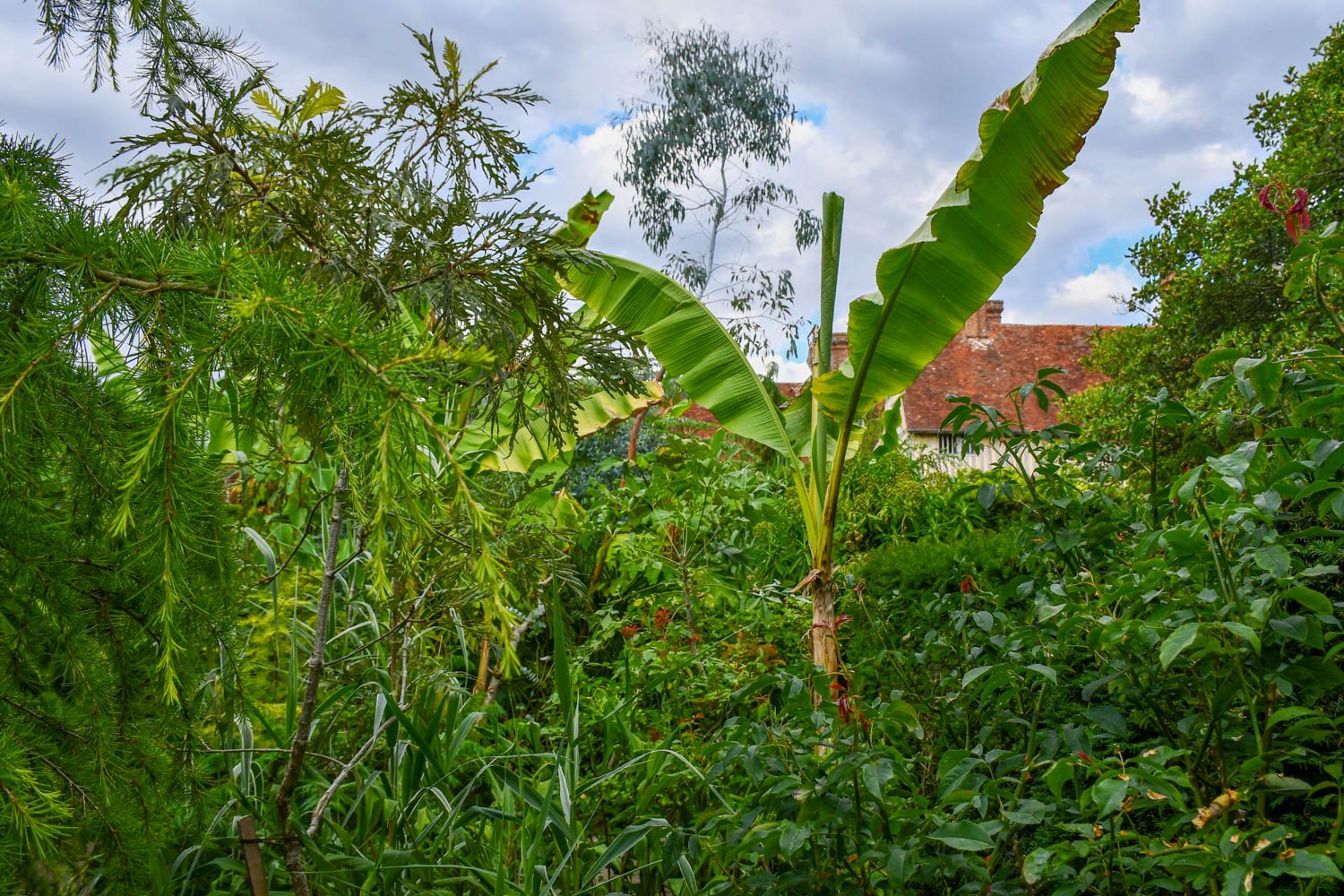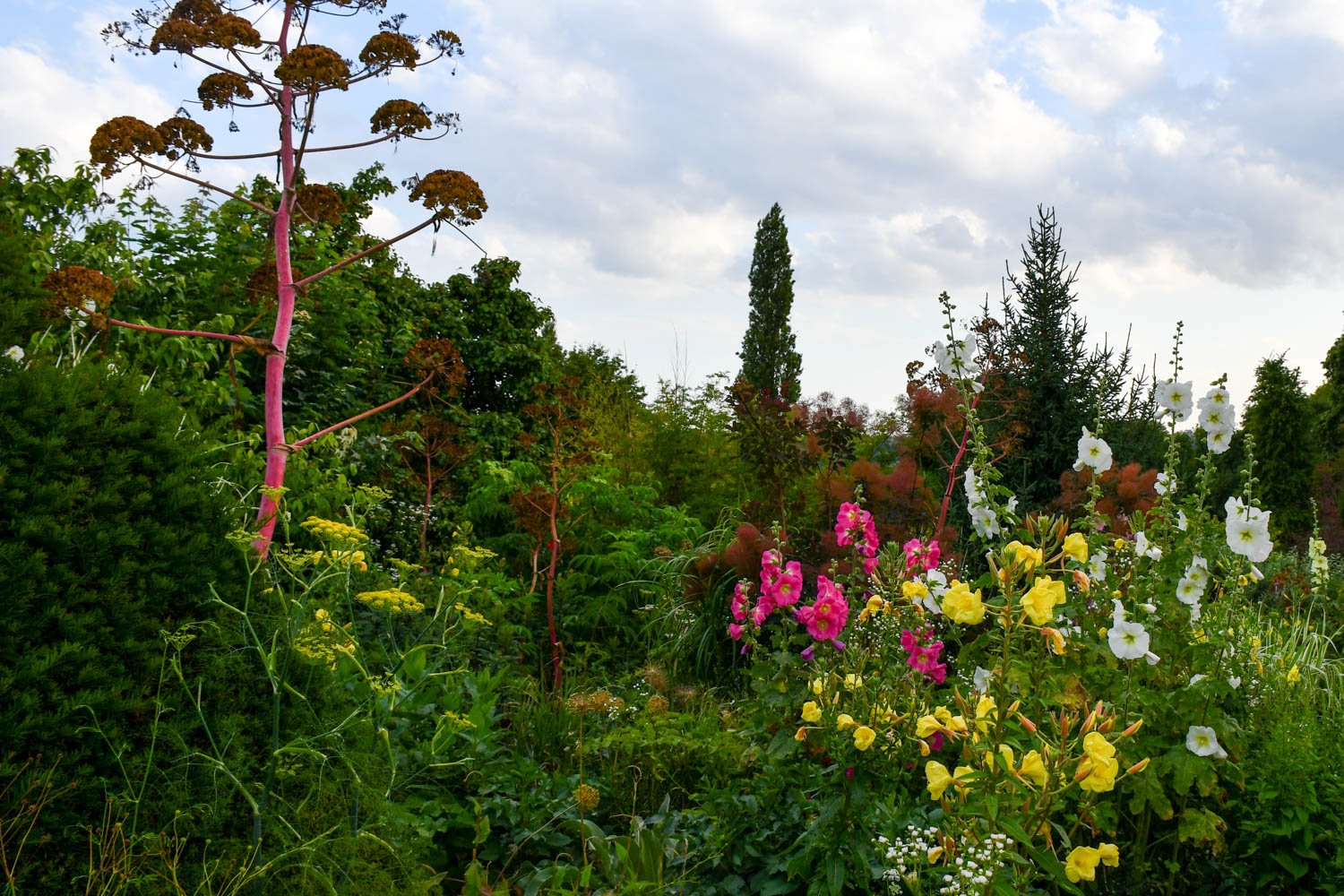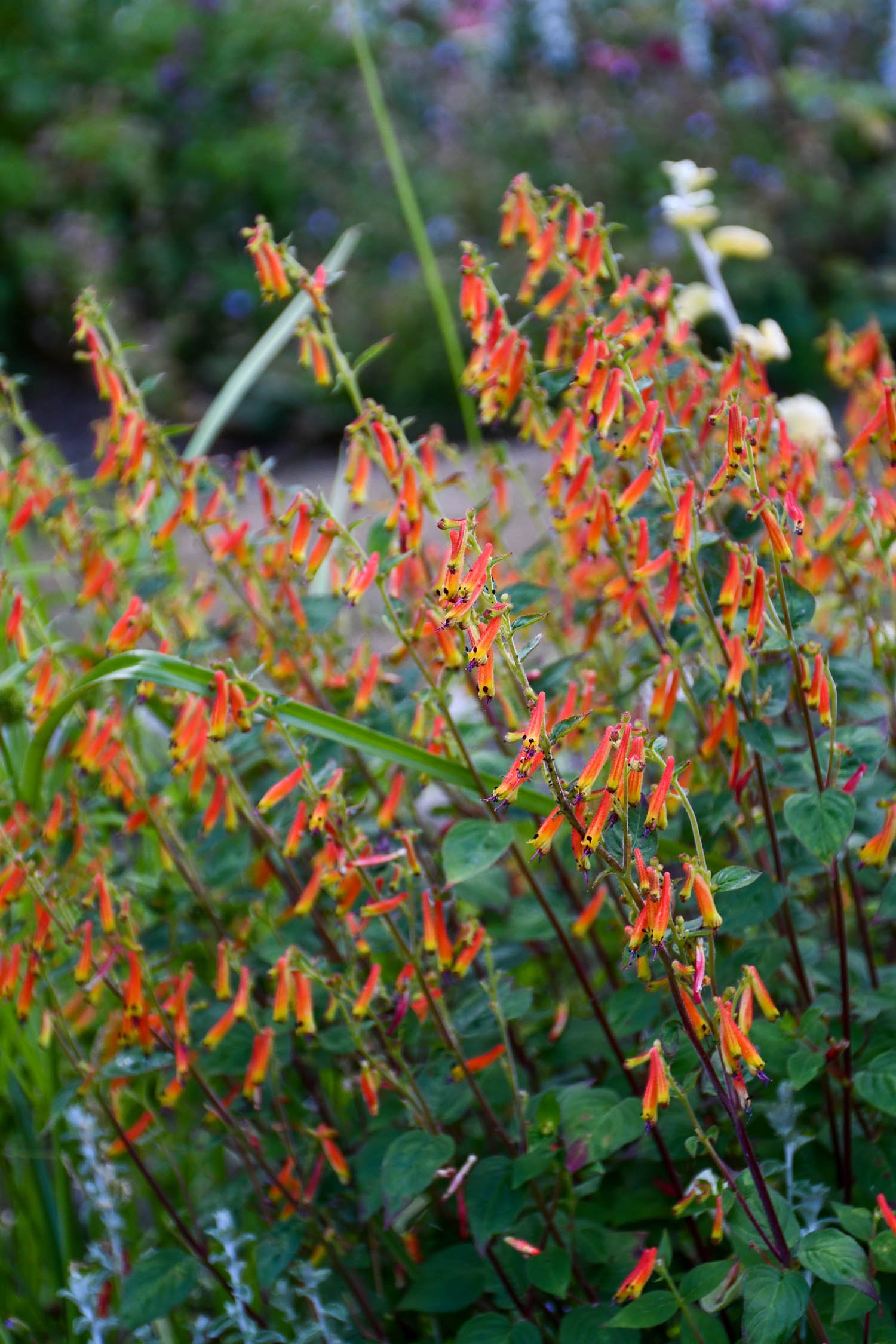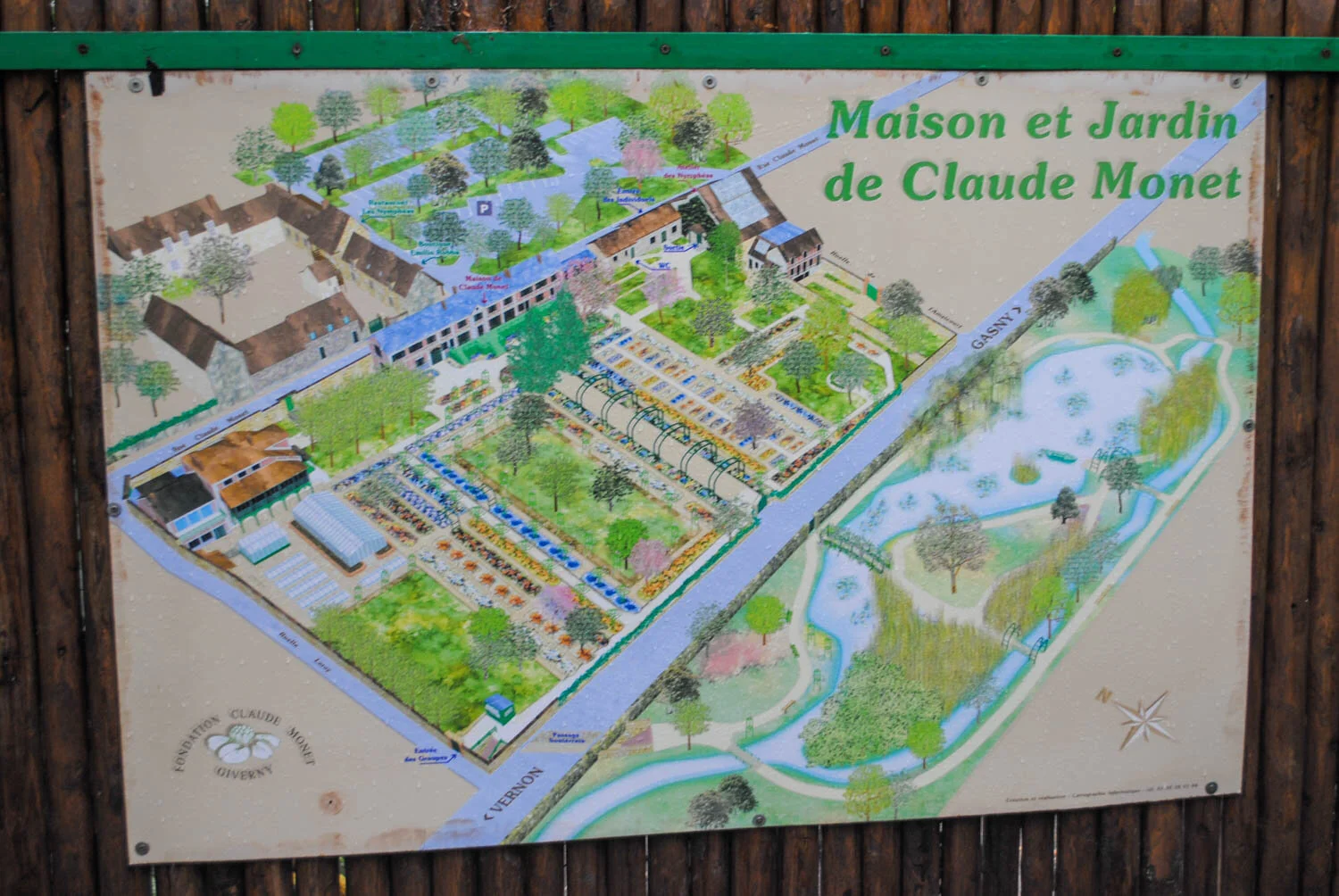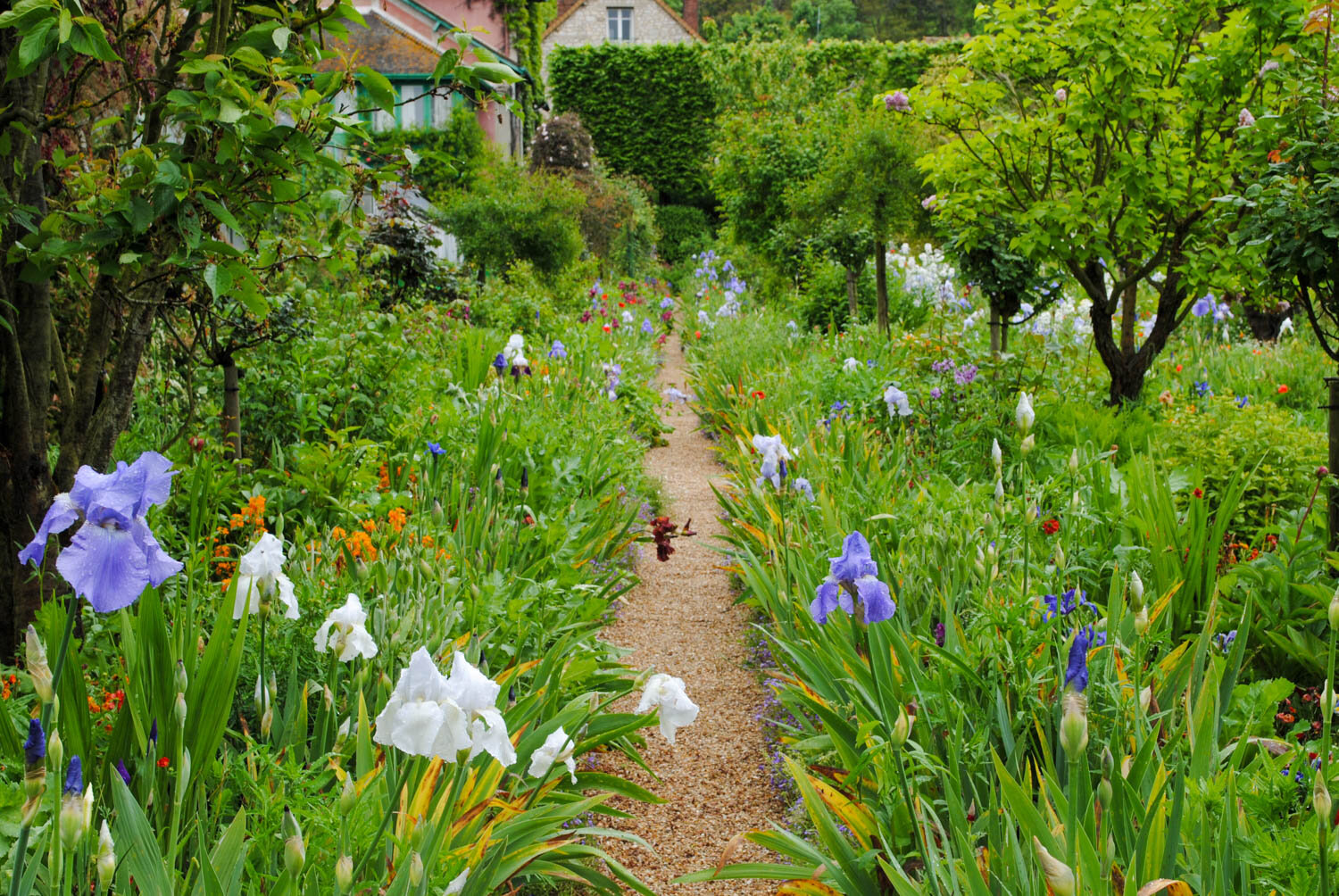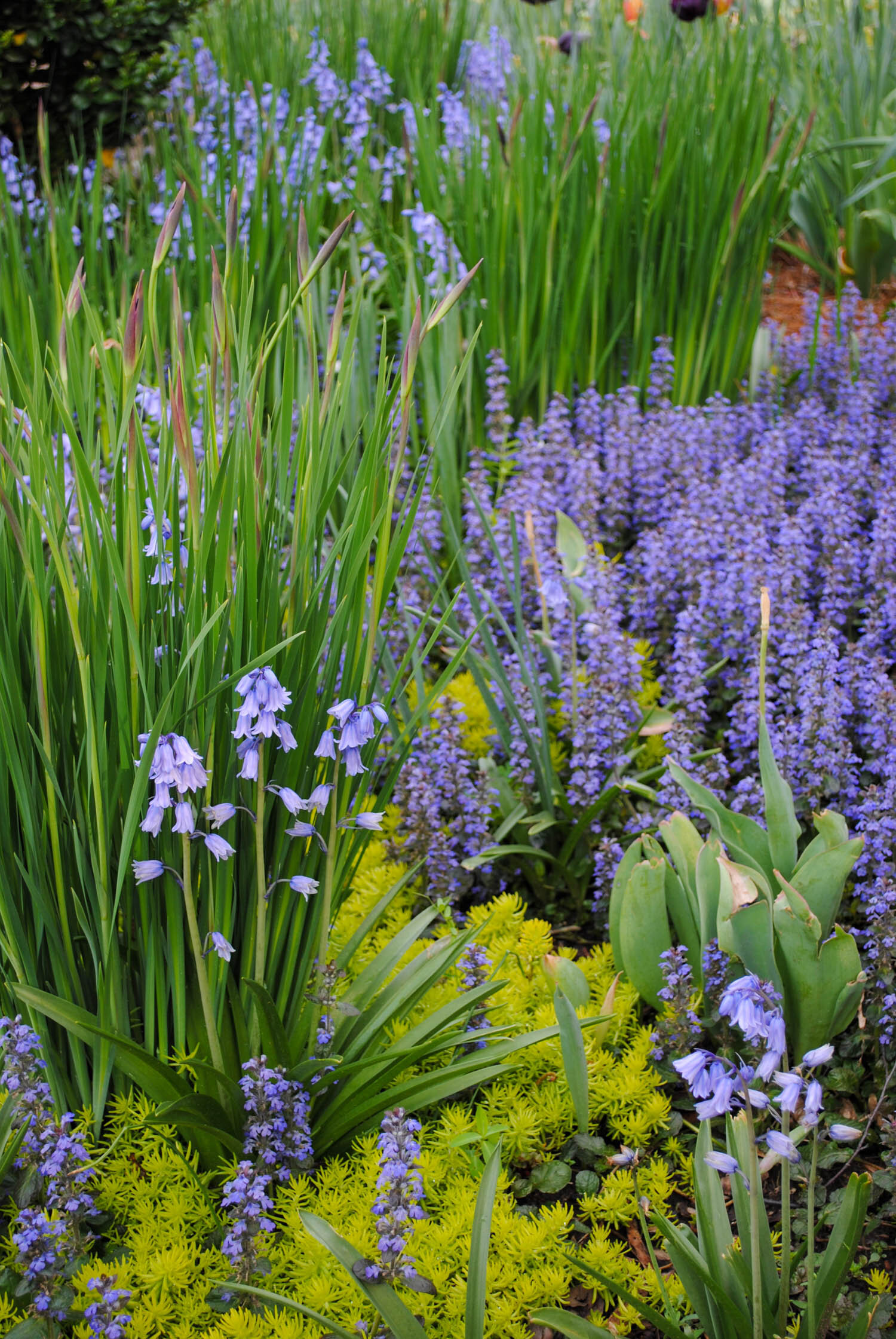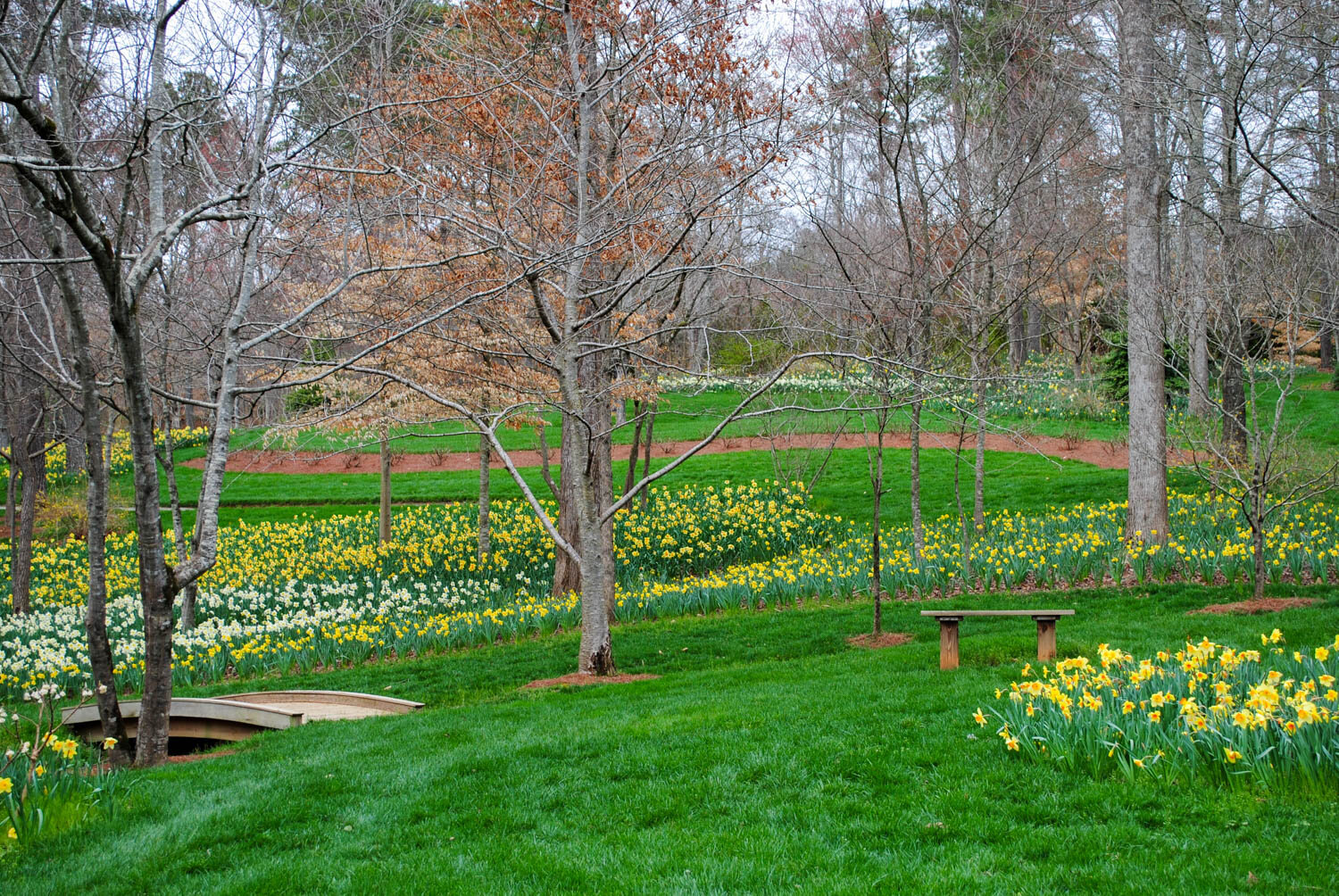If you want to create better designs with people’s preference in mind, my Botanic Bootcamp The Preference Matrix for Naturalistic Design offers a deep dive into the four key factors coherence, complexity, legibility, and mystery and how they shape our emotional connection to landscapes.
With over 20 practical strategies, you’ll learn to how to better design spaces that are ecologically sustainable, visually engaging, and intuitive to navigate.
Crafting incredible plant combinations is something that every horticulturist desires. We want our plantings to be engaging and beautiful. But, with so many plants, many gardeners wonder where to start?
We can frame our plant combinations in the mindset of balancing coherence and complexity from Rachel and Stephen Kaplan’s Preference Matrix. Having both factors in plant pairings can create dynamic combinations that humans prefer when looking at landscapes.
From research, the Kaplans noticed that participants had certain preferences when looking at images of landscapes. And, when they considered the similar patterns between those images they developed a matrix to explain those preferences. The matrix has four components based on the combinations of the immediate or inferred human desire to understand and explore.
Coherence is where humans group things together in our visual field (immediate understanding).
Complexity is the perception of richness in a scene. Our eyes move around with different stimuli (immediate exploration).
Legibility is the ability to read the landscape and recognize how to traverse the space (inferred understanding).
Mystery is where information about the scene is hidden from us and the promise of more exists (inferred exploration).
BALANCING COHERENCE AND COMPLEXITY
When we are thinking about creating powerful plant combinations, coherence and complexity from this model can be great allies. In garden design we often refer to coherence as repetition, harmony, and rhythm, and complexity is thought of as complementary colors, contrasts, or different shapes or forms.
Many of my favorite combinations that I have seen over the years exploring the wild and gardens has been a balance between coherence and complexity, where the mind is able to group plants together based on color, texture, or form, and yet there’s a contrasting element to spice things up.
Let's look at some real-world examples that demonstrate these principles in action. Each shows different ways to achieve coherence while maintaining engaging complexity. You can use these images to practice thinking about coherence and complexity below.
Before you read the caption pause and ask what makes the plants an effective combination.
Don’t worry too much on the specific plants and whether you can grow them or if they are native or not. Think how can you use the elements in your own design.
Also, remember landscape preferences are based on averages. I can’t promise you’ll love every image below, but I guarantee you’ll find inspiration by looking at them.
Hellstrip in Nacogdoches, TX. Coherence: warm colors. Complexity: flower shape.
Lurie Garden, IL. Coherence: the gray color in Eryngium (rattlesnake master) and the buildings behind. Complexity: different shapes from round flowers to flat structures behind.
Great Dixter, United Kingdom. Coherence: repeating white and maroon/pink colors. Complexity: the different textures and forms.
Great Dixter, United Kingdom. Coherence: repeating colors of yellow and purple. Complexity: having different plant texture and forms.
Chanticleer, PA. Coherence: repeating green. Complexity: Contrasting textures.
Chanticleer, PA. Coherence: repeating greens and blondes. Complexity: different plant shapes and architectures.
Rotterdam, Netherlands. Coherence: flower shape and cool color scheme. Complexity: different plant habits.
Oudolf Field, United Kingdom. Coherence: the purple color in all three plants. Complexity: different plant forms and floral architecture.
Oudolf Field, United Kingdom. Coherence: repeating the purple color. Complexity: solid flower spikes and wispy grass texture.
Montrose, NC. Coherence: repeating purple. Complexity: color in flowers and foliage for different textures.
Chanticleer, PA. Coherence: cool color scheme. Complexity: different flower shapes and plant architecture.
Hillside, United Kingdom. Coherence: repeating yellow and warm colors and repetition of the spikes. Complexity: the different plant forms and flower architectures.
PRACTICE CREATING COMBINATIONS
If you’re looking to make better plant combinations, thinking of how to balance coherence and complexity is a great place to start. Here are a few strategies you can use.
Observe plants in the wild. You may notice combinations around you that are really captivating. Mirror them in your garden.
Consider scale. Across a large site, coherence might be more important to help the plantings feel unified, but closer up there may be opportunities to play off more contrast.
An easy framework. As you saw above a quick way to have an engaging combination is repeat a color in 2 or 3 plants and then vary the form, texture, or architecture. Just remember that on some plants, color may not last long, and you need that complexity to keep it engaging.
Keep things simple. Too many different plants can quickly become quite chaotic. Don’t overdo it with too many plants.
Screenshot ideas on your phone. I find myself capturing images that I see online. I file them into albums for ideas later and review them when making plant choices or buying seed and plants for the year.
Test combinations at the small scale. Plants in pots are movable and offer you the chance to move things around before fully committing in the garden. You can find fun pairings this way.
Create floral arrangements. Arrangements offer the chance to see what two plants would look like in close proximity. If nothing else, float flowers and leaves in a bowl of water or gather clippings and lay them out on the ground. Bringing plants together sparks ideas.
Get comfortable with experimenting and failure. I planted Oenothera lindheimeri ‘Sparkle White’ (gaura) and Penstemon laxiflorus (nodding penstemon) together and thought they would work. It looked like the garden vomited pink cotton candy. It was too much. I removed the gaura so that the penstemon could really shine.
Borrow ideas. I can’t tell you the number of horticulturists I’ve heard say they love to steal ideas from others. Read books, visit gardens, and study the work of others.
As you train your eye, you’ll start noticing coherence and complexity more in the wild and in gardens. Your garden is ultimately a reflection of your creativity and vision. Let coherence and complexity (and legibility and mystery) be tools in your design toolkit that help you create plantings that are both visually harmonious and full of discovery.
After all, the best gardens don't just follow principles. They tell stories. The question is what story will your garden tell?















